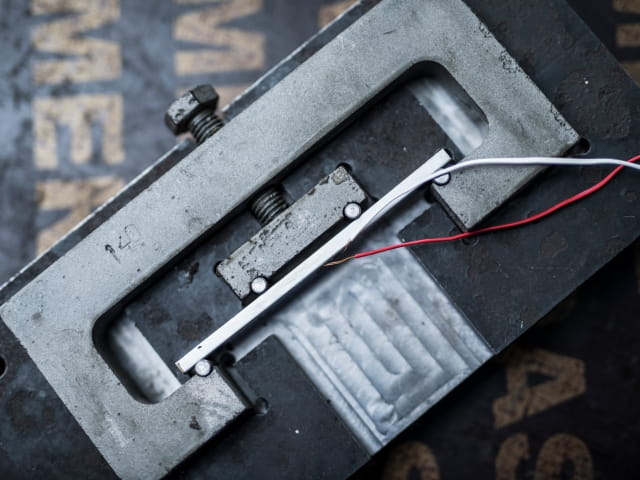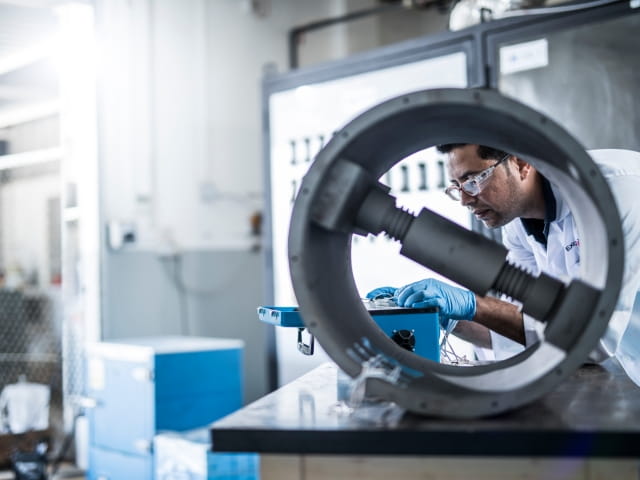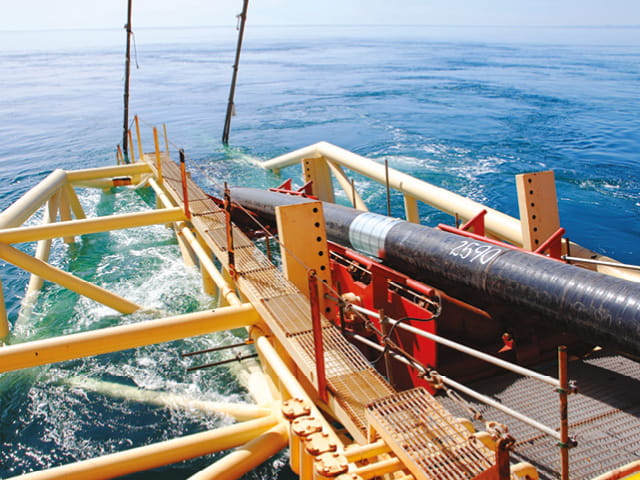Element offers Hydrogen Induced Cracking (HIC) tests to accurately assess the susceptibility of your carbon and low alloy steel equipment to hydrogen induced cracking in wet H2S/sour service operating environments such as in theOil & Gasindustry. The tests are normally carried out according to NACE TM0284.
碳和低合金eels which are subjected to sour service environments may be susceptible to Hydrogen Induced Cracking (HIC). In the presence of water and hydrogen sulfide, atomic hydrogen is produced and enters the steel, recombining at discontinuities to form molecular (gases) hydrogen (gases). The pressure of the hydrogen gas causes localized internal cracks, known as Hydrogen induced cracks.
Hydrogen induced cracks either follow a linear or stepwise path within the material, hence the term ‘stepwise cracking’. However, under certain stress and material conditions, the cracks can be arranged in a ladder-like array known as Stress Orientated Hydrogen Induced Cracking (SOHIC). This form of cracking is often seen in the low hardness Heat Affected Zone (HAZ) region of welds.
With the fast turnaround of tests and access to a global network of expertise, our dedicated corrosion labs are able to carry out HIC and SOHIC tests on steels furnished in the form of pipes, plates, fittings, and flanges for use in fabricating pipelines and pressure vessels.
HIC test method– NACE TM0284
Element performs HIC testing in accordance with NACE TM0284 by exposing unstressed test specimens to the specified environment saturated with hydrogen sulfide gas at 1 bar pressure for a duration of 96 hours for the standard test. Fitness for purpose of testing may also be performed using reduced partial pressures of hydrogen sulfide and for durations of up to 30 days.
Following the exposure period, the specimens are metallographically prepared, optically examined, and any cracks are measured and the following ratios reported:
- CSR (Crack Sensitivity Ratio)
- CLR (Crack Length Ratio)
- CTR (Crack Thickness Ratio)
Stress-Oriented Hydrogen-Induced Cracking (SOHIC) test method
Element carries out SOHIC testing toNACE MR0175/ISO 15156using test methods in BS 8701 (Full Ring Test), NACE TM0177-Method A (tensile) or NACE TM0316 (Four Point Bend).
For more information about how we perform Hydrogen Induced Cracking (HIC) Testing, or to request a quote,contact us today.
making certain for nearly 190 years
More from Element

Hydrogen Embrittlement Testing
Element performs Hydrogen Embrittlement (HE) testing to ASTM F591, Galvanically Induced Hydrogen Stress Cracking (GHSC) to NACE MR0175/ISO 15156 and Hydrogen Induced Stress Cracking (HISC) testing.
Read More

Stress Corrosion Cracking (SCC) Testing
Element’s Stress Corrosion Cracking (SCC) testing evaluates the susceptibility of metals to cracking failure under tensile stress and corrosion.
Read More

Sour Service Corrosion Testing
Element is one of a few ISO certified sour service labs in the world, providing sour service corrosion services for a variety of test types including NACE MR0175/ISO 15156.
Read More

Corrosion Testing
Element’s corrosion testing laboratories provide complete corrosion testing services to many industries, including salt spray, cyclic corrosion, pitting testing, and more.
Read More




